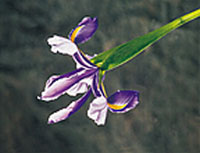Avoid Aggravation
Spend Your Money Wisely When Buying Lenses
People have been fascinated with panoramic imagery ever since the beginning of photography, but my own fascination can be traced back to Bausch & Lomb's invention of CinemaScope lenses for the movies during the 1950s. The first CinemaScope movie, The Robe, had an original projected aspect ratio of 2.66:1, but over time this changed for various technical reasons, eventually evolving into the 2.35:1 that is commonly used today. While I saw the film in November, 1953, I remember little about the plot or even the stars; what I remember most was the wide screen and I've been in love with that view ever since. Capture The Image. For me, nothing captures scenic vistas like a panoramic photo and nothing can be more fun to print using the tools found in your digital darkroom. While purists might debate some of the specifics of panoramic photography that follow, I prefer working with the dictionary's definition of panorama that says that it's an "extended pictorial representation of a landscape or other scene." |
|||
|
|||
Stitching Digital Images. Many photographic companies sell panoramic adapters that can be attached to tripods, then after a cameras is mounted you can precisely photograph several sequential images using a film-based or digital camera. After the images are digitized, you can use software to stitch them together to form a continuous image. This is an especially useful technique when working with images captured from digital cameras because it effectively multiplies the resolution of the capture device, enabling it to create a higher resolution image than the camera is inherently capable of producing. Stand-alone stitching software is available from many companies including Enroute's QuickStitch and PowerStitch, Ulead Systems' Cool 360, and this feature is sometimes built into digital imaging programs such as ArcSoft's PhotoStudio 2000. Here's a look at how images can be combined into a stitched panorama using PhotoStudio 2000. Step 1: The original photographs were made using a Kodak DC290 Digital Camera using the highest quality compressed mode and saved as a JPEG file. The images were directly opened into PhotoStudio 2000 from a CompactFlash card using Microtech's USB Camera-Mate. Step 2: The Stitch command can be accessed through the Effects menu or a button on the toolbar. A Stitch Control Panel allows you to place the two image files on the left and right and specify how much blending (overlap) there will be between the two. It sounds complicated and with just a little practice, you'll see how easy it is. Step 3: Use the Stitch command to stitch the two images together creating a panoramic image. After the image is stitched, you will have to trim off any areas that were created when the two horizon lines of the images were blended. |
|||
Just because you don't have any panoramic images doesn't mean you can't create your own from scratch. The same technique that's used to create real panoramas can be used to create faux images made from a single original photograph. In Arcsoft's PhotoStudio 2000 you can use the Mirror option in the Rotate window to create a mirror image of your original image, then after saving it under a different name, you can stitch the two together to produce what I call a faux panorama.
|
|||
Just because you don't have any panoramic images doesn't mean you can't create your own from scratch. The same technique that's used to create real panoramas can be used to create faux images made from a single original photograph. In Arcsoft's PhotoStudio 2000 you can use the Mirror option in the Rotate window to create a mirror image of your original image, then after saving it under a different name, you can stitch the two together to produce what I call a faux panorama. |





































